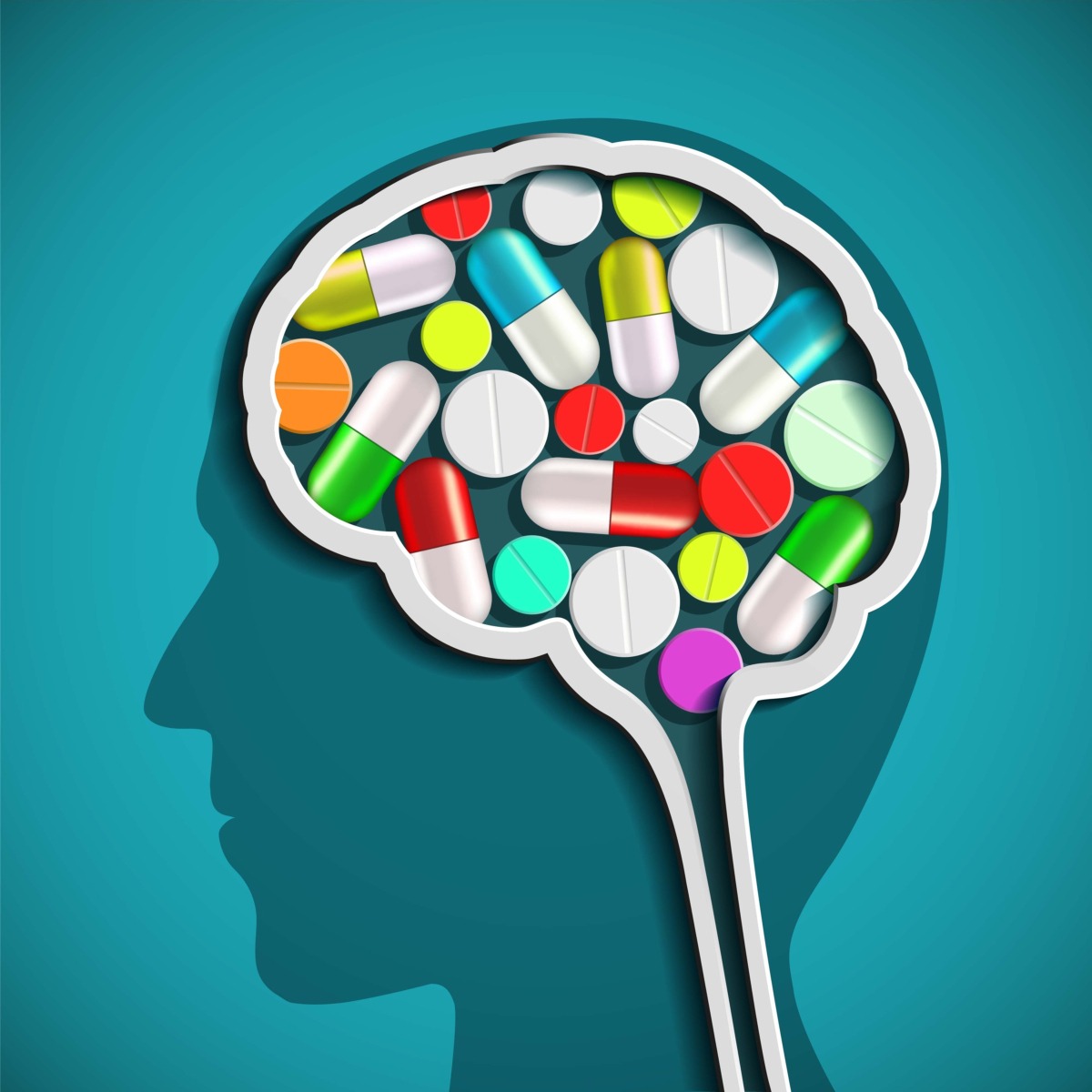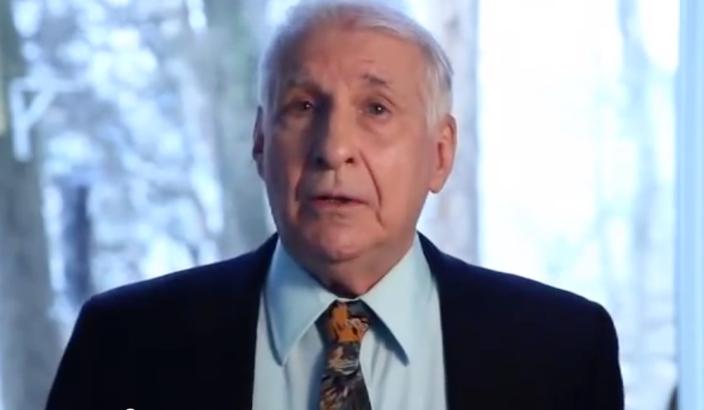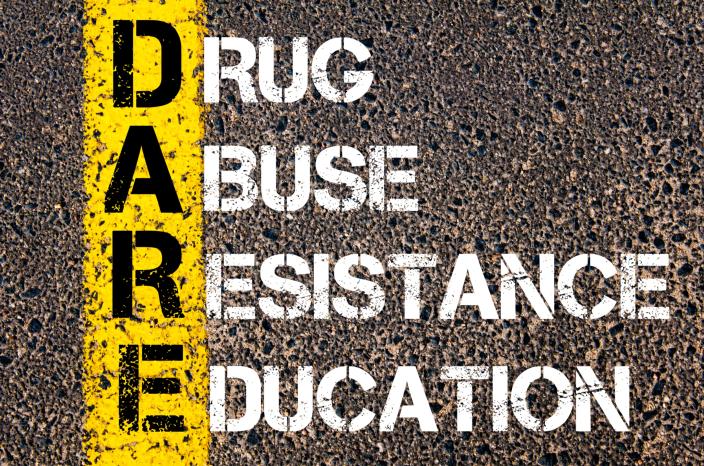Exposing Über-Dosing - Part 2
By Jacobus Hollewijn

August 10, 2022
Psychology
Are We Over-Medicating Our Children?
This article was originally published in SW Montana’s Bi-monthly newspaper called Natural Life News and Directory in the 2013 November/December edition.
It has been edited on August 10, 2022.
“What Pfizer, the FDA and other major drug companies…have done is to ignore the negative findings of studies (on antidepressants) when the results go against the corporate interest. The twelve antidepressants in question, studied between 1987 and 2004 are Zoloft, Serzone, Remeron, Welbutrin SR, Paxil, Paxil CR, Cymbalta, Effexor, Effexor XR, Celexa, Lexapro, and Prozac”. John Neustadt, ND(1) Steve Pieczenik, MD, PhD(2) (Bozeman Chronicle, February 9, 2008)
These were just some of the comments the doctors shared with readers on a cold Saturday morning in 2008. Research on the above-mentioned class of antidepressants involved 74 studies and 12,564 patients. They had been published in the New England Journal of Medicine(3) under the title “Selective Publication of Antidepressant Trials and its Influence on Apparent Efficacy,” because from the 38 positive studies, 37 were published; from the 36 negative ones only 14 were published, and 11 of those were actually mischaracterized by presenting a positive twist.
Doctors Pieczenik and Neustadt concluded that after analyzing all the data, the researchers determined that antidepressant medications work only 40-50 percent of the time, and that the data was blatantly biased. The effectiveness of these medications was artificially inflated by nearly 70 percent in the case of Serzone, and by 64 percent in the case of Zoloft - all just to meet the bottom-line (i.e. financial) goals of the manufacturers.

Dr. Breggin caught my attention while watching the documentary written and produced by Gary Null, PhD(5), entitled, “The Drugging of Our Children”(6)-(2005) in preparation for this article. I liked what Dr. Breggin had to say, and I will share some of his quotes right here. He stood out for me amidst great comments from other doctors, school counselors, parents, patients (teenagers), and even from moviemaker/author Michael Moore (Best Documentary Academy Award winner in 2002 for Bowling For Columbine). Those who saw Bowling For Columbine may remember Moore’s explorations as to what may have been the causes for the Columbine High School massacre on April 20, 1999 and other acts of violence with guns in the United States.
In The Drugging of Our Children he shares observations based on new evidence highlighting the effects that prescription medications, usually recommended for ADD/ADHD(7) and those prescribed for depression, can have on young children, their parents, and their surroundings.
MOORE’S MIND

How else do you explain two, otherwise decent kids, very smart, no history of violence to other kids in the school… WHY THEM? Why did this happen? It is an extremely legitimate question to pose; and it demands an investigation.”
CHILDREN’S CHALLENGES
Being depressed is different than going through a depressing period in one’s life. Many people agree that these are very depress-ing times. Financial stress during the last five years has been a strain on family dynamics, personal and professional relationships, and may have had affects on health choices as well.
Children will roll with the punches, as they have done throughout history, even stepping into a more mature role when called upon. Divorce and the premature death of a parent or sibling come to mind. However, this stress of stepping up to the plate too early may stunt their natural, emotional development and possibly come out sideways years later during intimate relationships, or even in their role as parents. Children need a compass, which is usually fulfilled by a parent or emotionally mature and responsible adult in their lives.
We all need to develop certain emotional and spiritual qualities in our lives. When these opportunities are taken away from us while we’re young, it may create conflict when dealing with specific emotional moments or spiritual insights as our responsibilities have grown. Two of these qualities are spontaneity and honesty.
Julian Whitaker, M.D. in an article titled “Childhood is Not a Disease – Children on Drugs(8),” discusses the over-diagnosing of children, especially boys, with ADHD. Statistics show that while there are no official diagnoses for ADD/ADHD, they are being treated as a legitimated disease! And so, today, one in ten children is claimed to have ADHD(9), a 22% increase since 2003. About two-thirds of these children ‘diagnosed’ are on some form of powerful mind altering, spontaneity-reducing, prescription drug, such as Ritalin, Adderall, Concerta, and Vyvanse. This amounts to about 7 million children who take these before they leave for school in the morning.
Dr. Whitaker states “Childhood should be a time of unbridled joy, not docile obedience – and certainly not indoctrination into drug use. We must put an end to the arbitrary labeling of children with this bogus diagnosis and the indiscriminate use of ADHD drugs.”

Another challenge to our children today is the delicate balancing act of using social media. Millions are spending otherwise valuable time living in an Internet cloud of superficial images, conversations, and networking. It has become a wasteful effort for many, highlighting multiple aspects of one’s personal life that are often exaggerations of insignificant faults and qualities. Somehow there is the urge to confess all this to their friends, or to bore others with it. Social media can be dangerous amongst today’s school-aged children. Those who don’t partake in that world are ‘out’- they don’t ‘belong’. Some even get openly ridiculed or bullied. This type of pressure in a young person’s life - the need for instant gratification, being an A student, and an A athlete, the yearning for acceptance, and the fear of rejection - can turn their young life in a tailspin. This social media ‘world’ appears more real than the reality of the world they live and breath in. They let social media run, and (sometimes) ruin, their lives.
On the positive side, the fascinating existence of social media has also provided a potential communication network around the globe for anyone to participate in.
RAVAGING RITALIN

Dr. Breggin states, “These drugs disrupt three of the most widespread neurotransmitter systems. They actually send them into overdrive. The brain doesn’t like this and fights back, trying to slow itself down… This creates a very unstable and very unpredictable situation, and as a result you never know how a child is going to react to these drugs, other than, over time, the brain is going to compensate very heavily for the drugs.”
According to the FDA, side effects include: insomnia, anxiety, panic attacks, agitation, irregular heartbeat, high blood pressure, dizziness, seizures, headaches, vomiting, decreased appetite, stunted growth, psychosis (such as hearing voices, believing that things are suspicious or not true), worsening to bipolar disorder, aggressive behavior or hostility, suicidal thoughts, or sudden death in those with heart problems or defects.
First synthesized in 1944, Ritalin was improved in 1950, and by 1954, it was tested on humans. In 1957, Ciba Pharmaceutical Company began marketing Ritalin to treat chronic fatigue, depression, psychosis associated with depression, narcolepsy, and to offset the sedating effects of other medications. By the 1960s, interest focused on the treatment of hyperkinetic syndrome, which would eventually become Attention Deficit Hyperactivity Disorder. This resulted in Ritalin’s steadily increased use in the ‘70s and early ‘80s. Today, according to the United Nations reports, the United States produces and consumes as much as 85% of the world’s production of Ritalin!
As you are reading this, ask yourself if you remember anyone 40-50 years ago who was diagnosed with ADD or ADHD, or who was on this type of medication? What happened all of a sudden?
In The Drugging of Our Children Michael Moore states, “The pharmaceutical companies realized a while ago that there were huge profits to be made on playing on parents’ fears, and also playing on a generation of parents looking for the convenient way to raise their children.” And Fred Baugman, M.D. (Neurologist) states, “ADHD is a means of making paying patients out of normal individuals. And once they are given a prescription and put on medications… they have them for a lifetime. That’s what behind the epidemic.”
For those who don’t need Ritalin for the above-mentioned reasons, it has a high potential for abuse. By crushing the tablet into a powder and snorting it, or dissolving it in water for intravenous injection, it may produce feelings of euphoria(11).
According to the Drug Enforcement Agency (DEA) Ritalin is one of the most trafficked drugs in the U.S. today. They have collected reports indicating that adolescents who are prescribed Ritalin may give or sell it to their classmates who crush and snort the tablets. Ritalin is also diverted through "Attention Deficit Scams,” in which a parent or other adult takes a child they claim has ADHD to a number of doctors to obtain prescriptions for Ritalin. The adult then keeps the drug for his or her own use or to sell or trade for other drugs.
The DEA has also received anecdotal reports(12) of college students using Ritalin to help them study, especially for all-night cramming, in addition to using it as a "party drug." One survey of students at a public liberal-arts college found that over 50% of survey participants knew other students who had used Ritalin for fun, 16% had used it themselves, and nearly 13% reported their own use included snorting it.
ANTAGONIZING ANTIDEPRESSANTS
Jay Lombard, D.O. sees that many of his colleagues are prescribing the child more medication to suppress the side effects of Ritalin and similar drugs. “You have a child that becomes depressed while on Ritalin, so they give them Prozac, or another antidepressant, like Zoloft. If they can’t sleep, they give them a drug for that. All of a sudden, what we have done, we have all these (sensitive) children who are on two or three different medications to mediate the side effects of the original medication (up to 4 or 5 drugs). Now they are on their way to become psychotic, and unrecognizable to their parents. Every drug is a foreign chemical. Every drug is a potential poison”.


Dr. Breggin: “Eric took Luvox on the day of the shootings, or the night before, because he had normal, effective levels of Luvox in his blood on autopsy.” Breggin continues, “A clinical study done on a child while taking Prozac, developed fantasies of murdering his classmates, or being murdered by them. These fantasies and nightmares became so real that the child became confused about what reality was. Prozac is closely related to Luvox.”
DIABOLICAL DIAGNOSES
When you check the Psychiatric Association Manual, the ICD-10 Classifications of Mental and Behavioral Disorders(13) and the Diagnostics and Statistical Manual of Mental Disorders (DSM-IV), the main symptoms of hyperactivity are: “often fidgets with hands or feet, or squirms in seat.” Under impulsivity it states “blurts out answer before question has been completed.” And under inattention it reads “often fails to give close attention to details, or makes careless mistakes in schoolwork or other activities.” Robert Erickson, M.D. states “And if you look at how this diagnosis has been formulated, it is to define disruptive classroom behavior, with the purpose of being able to medicate under these psychiatric guidelines.”
Annette Primiani, an Educational Consultant, states, “As a classroom teacher you are given a list of nine categories for diagnosing ADHD. If a child demonstrates six of these, then the teacher, a consultant, or a special-ed teacher can recommend this child to a doctor for medication, often with the support of Child Protective Services.”
According to Patti Johnson, a Colorado Board of Education member from 1995-2001: “In the early 1990s, there was a huge spike of children being diagnosed with ADHD, and subsequently put on Ritalin. At that time two things happened:
- The U.S. government awarded schools more money based on more children being diagnosed with ADHD.
- Low-income families, with a child diagnosed as ADHD and put on Ritalin received a much higher support payment.
"Depression in children is not a biological phenomena; it is a spiritual, psychological, and social issue, But whatever the reason is that kids get depressed, the solution is in the hands of adults to provide children hope, to empower children, to give them a sense that they can matter in their own world and in a larger world"Peter Breggin, MD
Dr. Breggin was one of the presenters during the 1998 Consensus Development Conference on ADD/ADHD, courtesy of the National Institute of Mental Health (NIMH). He states: “…the aim was to push the diagnosis of ADHD and to push the stimulant drugs. Thirty-one experts, split between pro-medication and against prescription drugs, were to address an objective panel, which would then give a consensus as to what the diagnostic issues were. And the result was a consensus statement, which said that ADHD was controversial, that it had no proven biological basis (i.e. there is no specific psychological test or blood test), that there was a risk for overmedicating our children, and that stimulant drugs have a lot of serious, adverse effects. The panel had to admit that they could not diagnose it as a disease.”
Dr. Null remarks that researchers have stated that ADHD actually caused the brain to atrophy/shrink, and that it therefore was a disease. Then he adds, “What they neglected to tell the public was that virtually all of the ADHD subject groups had been on long-term stimulant therapy and that the stimulants themselves, the Ritalin and amphetamines, were the likely causes of the brain atrophy. And so, at no time has the scientific literature proven that ADHD is an actual disease - at no time have they dis-proven that the drugs used to treat ADHD are themselves the cause of the brain atrophy.”
SALUTING SOLUTIONS
Half a century ago, the amount of children diagnosed with ADD/ADHD or depression was infinitesimal. Today, there are over seven million children ‘officially diagnosed’ and medicated daily. This is a very sad fact and it doesn’t have to continue this way. Our children are not deficient in any of the above-mentioned drugs. What are they deficient in?
Healthy Parents: Lendon Smith, M.D.(1921-2001),(14) who practiced as OB/GYN and pediatrician for over 55 years, says, “If you are thinking about getting pregnant, clean up your diet (see tips below), quit drinking alcohol, start taking a high-quality multi-vitamin/mineral complex, with extra Folic Acid, 1,000-5,000 mg Vitamin C, extra Zinc (for the father). Also, breastfeeding is very important.
Minerals: Over 81% of minerals have been lost from our soils and foods during the last fifty years. Minerals perform important enzymatic and alkalizing functions in our body and brain. Try some liquid trace minerals in water, or take a couple of quality multi-mineral tablets daily.
Healthy Fats: particularly Omega-3 from fish-oil. Part of the fat-deficiency in children today may be inherited from the parents’ low-fat/no-fat diets from the 80s and 90s. That may have affected the quality of sperm and the health of the fertilized egg developing during pregnancy. These fats are absolutely essential for overall brain health, focus, problem solving, and vision.
I suggest two to three high-DHA Omega-3 capsules, or at least one teaspoon of pleasant-tasting cod-liver oil daily. It’s also important to add 2000-8000 IU’s of Vitamin-D3 daily, a fat soluble vitamin, which has shown improved positive thinking and happiness.
Carbohydrates: Substantially reducing carbohydrate-rich foods from the family’s diet can quickly lower ADHD symptoms. What I mean to say is the reduction of simple sugars, such as white breads, pasta, junk food, chips, dairy, candy, juices, and all artificial sweeteners (i.e. aspartame, NutraSweet, Equal, sucralose, splenda) and food colorings, especially Blue #1(15). I do believe complex carbohydrates found in whole foods are slower in the breakdown during digestion; and won’t focus so much on stimulating the brain like simple sugars do.
Eliminate Allergens and Toxins: Gluten has shown to contribute to confusion, loss of concentration and focus, indigestion, weakness, and insomnia. Also, today’s dairy quality is not what it used to be, and, because of homogenization and pasteurization, it has lost almost all of its immune-enhancing properties. And don’t discount allergies from eggs, chicken, and certain nuts. Then there is possible lead-toxicity, which damages a mechanism that regulates attention and self-control.
Increase Daily Protein: Most children are very active and need to refuel with the nutrients that feed all cells, not just the muscles, heart and brain. At least half their body weight in grams of protein daily will show rapid improvements in mood, energy, and good sleep. Make sure the child eats a protein-rich breakfast every morning.
Feel free to contact me with any questions and for further options.
… AND FINALLY,
Violence is so wrong. Based on personal reactions from those involved during and after a violent act, the sadness and grief make it clear there are no winners. These young aggressors, these killers, know emotionally that what they do is wrong, but they cannot stop themselves mentally. They cannot stop the voices in their head. And if this was created as a side effect of mind-altering drugs they are taking, then shame on the pharmaceutical companies that keep pushing these drugs for all the wrong reasons!
Dr. Peter Breggin says it well: “ Depression in children is not a biological phenomena; it is a spiritual, psychological, and social issue. But whatever the reason is why kids get depressed, the solution is in the hands of adults to provide children hope, to empower children, to give them a sense that they can matter in their own world and in a larger world.”
There is no substitute for adults our children’s lives - giving them support, gratitude, encouragement and hope. Hope does not lie in a pill.
REFERENCES
1 John Neustadt, ND graduated from Bastyr University in Seattle. He is also president of NBI Testing and Consulting, and author of more than 100 research reviews.
2 Steve Pieczenik, MD, PhD trained at Cornell and Harvard Medical Schools, is a board certified psychiatrist, was a board examiner in neurology and psychiatry.
3 NEJM – January 17, 2008
6 www.mercola.com See Archived Articles: July 20, 2013
7 Attention Deficit Disorder/Attention Deficit Hyperactivity Disorder
9 www.mercola.com See Archived Articles: July 20, 2013 (The Drugging of Our Children)
12 Babcock, Quinton and Tom Byrne. 2000. Student perceptions of methylphenidate abuse at a public liberal arts college. Journal of American College Health. November 2000 49 (3):143-145.
13 www.medical-dictionary.thefreedictionary.com/icd (International Classification of Diseases)
15 www.wellbeingjournal.com (Nov/Dec 2013; Vol. 22 #6): Diet and Children’s Inattentiveness – Food Dyes as a Causal Factor (by Jane Hersey)
The purpose of this website is to inform, educate, and entertain, not to diagnose, treat, or cure. Jacobus is not a licensed physician. If you intend to utilize any of the information contained in the articles and/or podcasts, I recommend you see a licensed, competent medical provider of your choice, or find additional information from other reputable sources. I cannot control the opinions of my guests. I will double-check my facts in good faith, but may not be able to fully verify every statement made by any third party.
If you utilize any information from this Website, you do so at your own risk.

